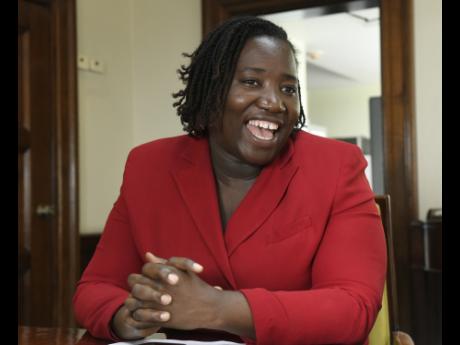
NGOs worry about fate of HIV programmes when donor funds dry upJASL revealed that several donor agencies would be transitioning, and there is no local funding to assist individuals in vulnerable groups.
There are growing fears that many programmes administered by non-governmental organizations to assist the most vulnerable Jamaicans could be shuttered shortly as international funding dries up.
Addressing a recent Gleaner Editors’ Forum last Thursday, Kandasi Levermore, Executive Director of Jamaica AIDS Support for Life (JASL), disclosed that in a few years, several donor agencies would be transitioning, and there is no local funding to assist individuals in vulnerable groups.
“The challenge that we are going to be having in a few years when these donors transition because a lot of these projects are not funded by the Government of Jamaica, [is that] there will be a point where there will be a gap,” said Levermore.
Among the programmes likely to be affected are those involved in the empowerment of individuals living with HIV and HIV-related illnesses, women at risk of domestic violence as a result of their health status, as well as those that sensitize law-enforcement and health professionals about the treatment of persons living with HIV. “The Global Fund has been engaging in transition dialogue for years, and we finally fear that it is coming,” said Levermore. “There is going to be a gap in the country’s response. So how are we going to ensure that we sustain these activities and our scaled-up activities? That’s going to be the question that we need to answer now,” she added.
CURRENT FEARS
It is feared that these programmes could be placed on the back burner by the Ministry of Health, which is now focusing its resources on areas such as cervical cancer prevention among primary school-age girls and the growing obesity crisis in Jamaica.
“We are asking the Government to begin looking at mechanisms to sustain this type of engagement that is not now present in the structure of NGOs and how they deliver their programmes,” Levermore pleaded.
“We have been having this discussion for years, and once you talk money, you hear about fiscal space, but the real question is, ‘can the country’s response stave off the tide without a mechanism to sustain the efforts?’ ” added Levermore.
WHAT IS PANCAP?
PANCAP is a Caribbean regional partnership of governments, regional civil society organisations, regional institutions and organisations, bilateral and multilateral agencies and contributing donor partners established on 14 February 2001. PANCAP provides a structured and unified approach to the Caribbean’s response to the HIV epidemic, and coordinates the response through the Caribbean Regional Strategic Framework on HIV and AIDS to maximise efficient use of resources and increase impact, mobilise resources and build the capacity of partners.
What are the Global AIDS Strategy 2021–2026 targets and commitments?
If targets and commitments in the strategy are achieved:
- The number of people who newly acquire HIV will decrease from 1.7 million in 2019 to less than 370 000 by 2025
- The number of people dying from AIDS-related illnesses will decrease from 690 000 in 2019 to less than 250 000 in 2025.
- The goal of eliminating new HIV infections among children will see the number of new HIV infections drop from 150,000 in 2019 to less than 22,000 in 2025.
What are the 95-95-95 Targets for ending AIDS?
- 95% of People Living with HIV know their HIV status;
- 95% of people who know their status on treatment; and
- 95% of people on treatment with suppressed viral loads.
HELPFUL LINKS:
Global AIDS Strategy 2021–2026, End Inequalities, End AIDS
https://pancap.org/pancap-documents/global-aids-strategy-2021-2026-end-inequalities-end-aids/
Caribbean Regional Strategic Framework on HIV and AIDS (CRSF) 2019-2025
https://pancap.org/pancap-documents/caribbean-regional-strategic-framework-2019-2025/
